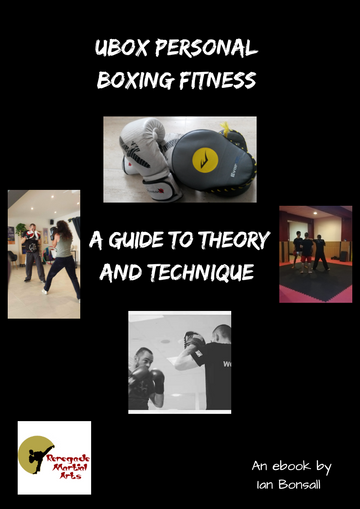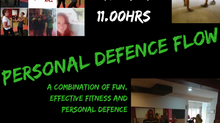Improving your Defensive Game: Understanding head slots (aka frames)
- Renegade Martial Arts

- Jul 9, 2019
- 4 min read
#renegademartialarts #boxingfitness #ubox #personalfitnesstraining #palmamartialarts #boxingtraining #boxing
Combat Sports are games of attack and defense. As any participant of any competitive discipline (Taekwon-do, Muay Thai, Boxing, MMA etc.) will attest, attacking strategy and aggression will only get you so far. Sooner or later, and to ensure a reasonable longevity within the sport, defensive strategy must be investigated and embraced within your game plans.
From a very simple perspective defensive strategies are developed from (or from a combination of) three key actions:
#1. Guards, blocks and parries
#2. Footwork
#3. Head and body movement
Developing a seamless integration of these actions, in conjunction with a sound offensive game, creates the opportunity to become a very elusive opponent. Crucially the integration of defensive actions allows for greater opportunities to evade, counter attack and ultimately disrupt the rhythm of your opponents offense,
In the hierarchy of available defensive strategies often guards, block, parries and footwork are most popular. It’s fair to say that they are easily and readily identifiable within most, if not all, combat sports and fighting arts. The biomechanical efficiency of some of these techniques is difficult to argue against However it is often the case these simple movements are used without paying attention to the simultaneous and integral movement of the head and body. Integral and coordinated movement is the hallmark of any successful participant in any combat sport. In this article we will investigate and suggest a straightforward and easy to method of better understanding,coaching and developing head and body movement.

Essentially this all starts this the concept that it is possible to divide the area you have to move in, into distinct and separate zones. These zones are typically referred to as slots or frames. Knowing which slot you're in (and that you are moving into) enables you to build a strategy for head movement and counter techniques. Each slot provides different options, angles and opportunities for further movement (traps, parries, footwork etc.) and/or counter strikes.
Movement into and across head slots is however not an isolated endeavour. The emphasis must be on a simultaneous and fluid integration of foot, body and head movement to allow for the best result. The overall intention of this strategy is to place you in an improved position to attack and therefore there must be coherent and well timed integration across all the component parts.
The next concept is flow. Head slots are points in the journey, rather than a destination. A smooth flow of movement between head slots creates a very elusive and challenging target for your opponent. Equally, flow between head slots by default creates loading patterns within the body, which provide great opportunity for specific counter strikes to be thrown.
As an example here consider the body weight redistribution created as a boxer slips to the outside of an incoming straight right hand. Assuming that our boxer is in an orthodox position (left foot lead) the lateral movement, from the centre to the middle left slot provides an opportunity to transfer body weight momentarily to the left (lead) side. The lead hook counter (which seamlessly follows that head movement) is then provided greater potential energy through the subesquent unload of body weight, in addition to a better angle of delivery. This is indeed only one simple application of the theory, however through practice of head slots flow it is possible to identify a multitude of load and unload opportunities, setting and firing efficient counter strikes. The head slot map provides a great starting point to begin exploring this movement and gaining further knowledge of your body position and body feel.
As an associated yet slightly removed point here, foot position (stance) and hand position are your responsibility. Without a good base of support there can be no upper body movement as there is simply no opportunity to retain stability in movement. In turn, without balance and stability, movement becomes inefficient and stilted. To provide fluidity in movement, your feet have to be well positioned. In the specific acquisition and development of head and body movement it may be best to begin with a foot position which is slightly wider than a traditional boxers stance. Whilst the increased width of your base may compromise foot movement (relative to the more traditional position) it will allow you to retain a greater stability when swaying your upper body, as you move between head slots.
As with all things, timing and understanding timing is fundamental. Progressively increasing the challenge posed with a great way to develop your ability. Through using equipment such as slip bags, sticks or paddles, head slot movements can be isolated and further developed. Equally through the use of isolated sparring drills you can begin to integrate head slot flow with other techniques such as footwork and counter striking. As a final point of the subject of timing, maintenance of a solid guard position is always a good idea, regardless of how well your feel you understand that timing thing. It's understanding the basics that allows us to develop more advanced skills and strategies.
From a coaching perspective, using a head slot map can allow students to better visualise and breakdown head and body movement. This type of visualisation is invaluable in the initial stages of as skill acquisition develops to better assist in the identification of the direction (and sometimes degree) of movement required. The head slot model also allows coaches to prompt movement dynamically, calling for specific movements across head slots, combining this into combinations in a very similar manner to striking flows.
In conclusion it is worth re-emphasing that head and body movement is one aspect of an overall defensive strategy. To provide as complete a skill set as we can, this element must be seamlessly integrated with footwork, blocks, parries and crucially counter strikes. Through the intrinsic use and understanding of head slots we can however begin to become more efficient competitors, evading incoming attacks whilst coherently and simultaneously priming effective counter strikes.




















































Comments